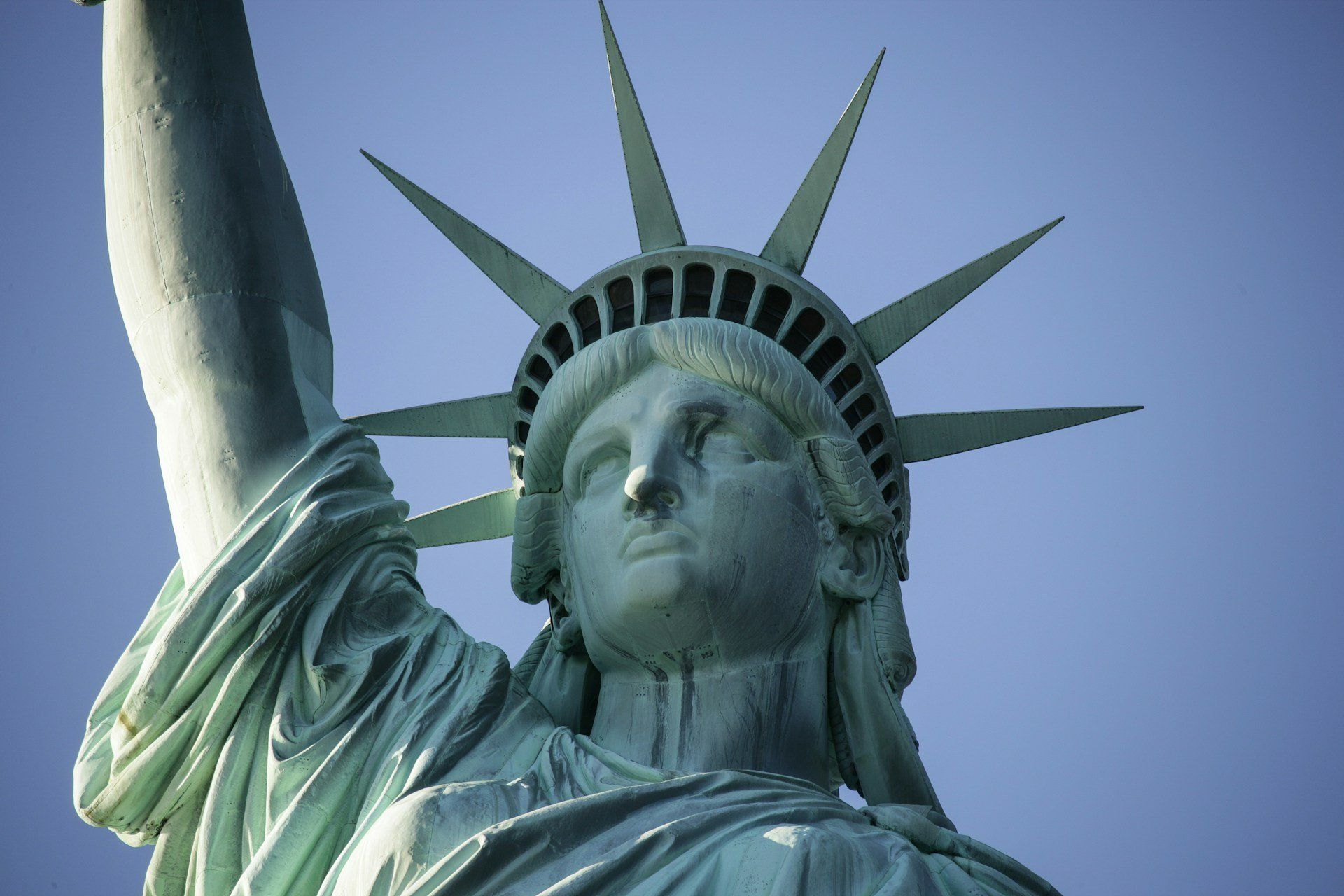One of the most recognizable figures in the world, the Statue of Liberty represents freedom and a beacon of charity for the “huddled masses.” Created by the French as a gift for the United States, the iconic monument has a rich history that draws in millions every year. Keep reading for historical facts about the Statue of Liberty to learn more about its creation.
7. The Statue of Liberty was once a lighthouse
Our seventh selection for historical facts about the Statue of Liberty refers to Liberty’s past life as a lighthouse. Two years after the grand debut of the statue, Lady Liberty functioned as a lighthouse for 16 years, with the symbolic torch serving as the beacon. But, since there was no amplifying lens in the torch, the light ended up being too dim for ships to see. The lighthouse part of the statue stopped in 1902 under the order of President Theodore Roosevelt.
RELATED: What’s the Biggest Statue in the World?
6. Gustave Eiffel helped build it
Known for the Eiffel Tower, Gustave Eiffel also appears on our list of historical facts about the Statue of Liberty. While Edouard de Laboulaye dreamt up the statue and sculptor Frederic-Auguste Bartholdi designed it, the metal framework inside the statue was made by no other than Eiffel. The framework is integral for the statue to remain standing and was put together at the same time the exterior parts were being designed.
5. The inscription on the statue was to help raise funds for construction
Our fifth selection for historical facts about the Statue of Liberty has to do with the famous inscription The New Colossus. The poem is inscribed on the pedestal, written by Emma Lazarus with the famous line, “Give me your tired, your poor, Your huddled masses yearning to breathe free.” The poem was written to raise money for the construction of the 89-foot stone pedestal, which the Americans were responsible for building.
CHECK OUT: 8 Random Historical Facts They Should Teach You At School
4. From 1886-1916 visitors could access Liberty’s torch
While a select few can climb up into Liberty’s crown, did you know visitors used to be able to climb into the torch as well? Our fourth selection of historical facts about the Statue of Liberty takes us back to the first years the statue was open to the public. From 1886 to 1916, visitors could travel into Liberty’s torch through a ladder in her arm. The viewing platform was closed after a nearby explosion and never reopened to the public. The original torch now resides in the Statue of Liberty Museum.
ALSO READ: 6 Famous American Soldiers You Should Know
3. Bartholdi almost made the statue in Egypt
Coming in third for historical facts about the Statue of Liberty is Bartholdi’s original plan for the statue. Frederic-Auguste Bartholdi’s first concept for a huge female monument was a lighthouse in Egypt to commemorate the French construction of the Suez Canal. But when that idea fell through, Bartholdi instead set his sights on commemorating the alliance between France and the United States, and what better way than with a female statue?
2. The statue’s parts were shipped from France in 214 crates
Our second selection for historical facts about the Statue of Liberty concerns the shipping process. Considering the size of the sculpture, the French decided to ship it in a series of parts totaling 350 pieces. These pieces were placed in 214 crates and shipped across the Atlantic to New York. Once the crates reached port in 1884, they were slowly pieced together and placed on the pedestal built by the Americans.
CHECK OUT: 14 Weird Facts About U.S. Presidents
1. The Statue of Liberty is a representation of the Roman goddess Libertas
Last but not least, on our list of historical facts about the Statue of Liberty is its symbolic origins. The statue’s name comes from the Goddess it represents, Libertas, a Roman deity personifying freedom and independence. Libertas was often depicted as a robed woman, inspiring Bartholdi to use the same garb in his sculpture. Libertas also appeared on Roman coins from the period of Julius Caesar’s assassination, supporting the Republic.
READ MORE: 15 Unexplained Ancient Artifacts From Around The World
